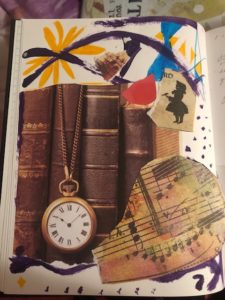Too often, artistry in all its forms is connected to mental illness in the popular imagination. We think of Van Gogh cutting off his ear, of Sylvia Plath sticking her head in the oven, of modern songwriters and poets writing about problems they might not have if they just talked to the person in question.
But that image of the tortured soul isn’t the picture psychological research paints. A 2010 study found little relationship between creative capacity and symptoms of anxiety or depression.
In fact, I would argue the opposite of this popular myth: that creativity actually facilitates and promotes mental health and well-being.
Expression can help anyone cope with life stress, even if only by getting your mind off of the problems that plague you. Consider the recent rise of adult coloring books or the process of designing a bullet journal. People report feeling more relaxed, and less anxious after participating in a creative activity, such as coloring. Anecdotally, I feel better after I journal about my day or work on a short story. I know people who play music or paint to relieve stress.
Ironically, however, the mental health counseling establishment was slow to integrate expressive arts into treatment plans, opting for more traditional talk therapy or medications. But in recent years, the arts have become more accepted as a legitimate therapeutic method. To that end, more universities are beginning to offer master’s programs specializing in expressive arts therapy. One of the foremost is at Lesley University in Cambridge. Emily Damore will soon begin her graduate studies at Lesley, specializing in music therapy.
Damore, who plays guitar, got her start in the field by volunteering with Alzheimer’s and dementia patients at the Life Care Center of West Bridgewater. She said the patients would light up when they heard music from their past. “The experience is creating music with someone who is hurting or needs help or even just something enjoyable is magical,” she said. “It’s in the moment, truly being present, and being human together in a capacity that’s healing for them. And I love it.”
I also spoke to Kelsey Skerpan, a registered pediatric art therapist at Massachusetts General Hospital, about how she got her start in the field:
“It was the perfect fusing of my two passions: art and helping others,” she said. “Art can be a powerful way to explore vulnerable emotions. Art therapy provides a non-verbal way to express one’s self, promote positive self-esteem and create a connection with others, which I think can be extremely helpful for all different populations.”
Skerpan emphasizes the individual client’s autonomy over their own therapy. “Especially in the hospital setting,” she noted, “it is important to allow patients to have a choice in what materials they would like to use, which can help support a sense of autonomy and control. Sessions can include exploring feeling surrounding their diagnosis, creating pieces to provide relaxation, or connection to loved ones back at home.”
No matter the form they take, expressive therapies offer timeless ways for people to manage their emotions and engage with others. As our mainstream culture becomes more accepting of mindfulness and aware of mental health, I believe that more people will turn to these strategies and realize art’s healing powers.


